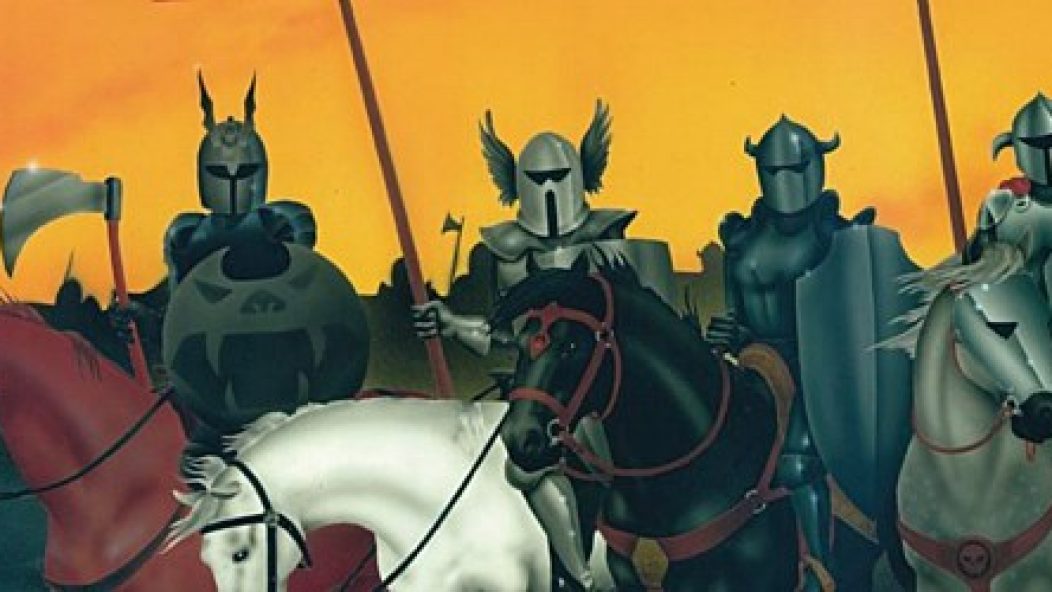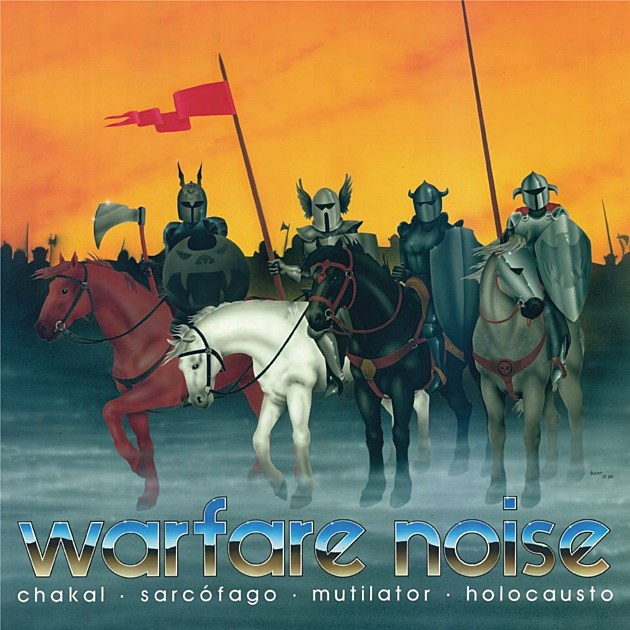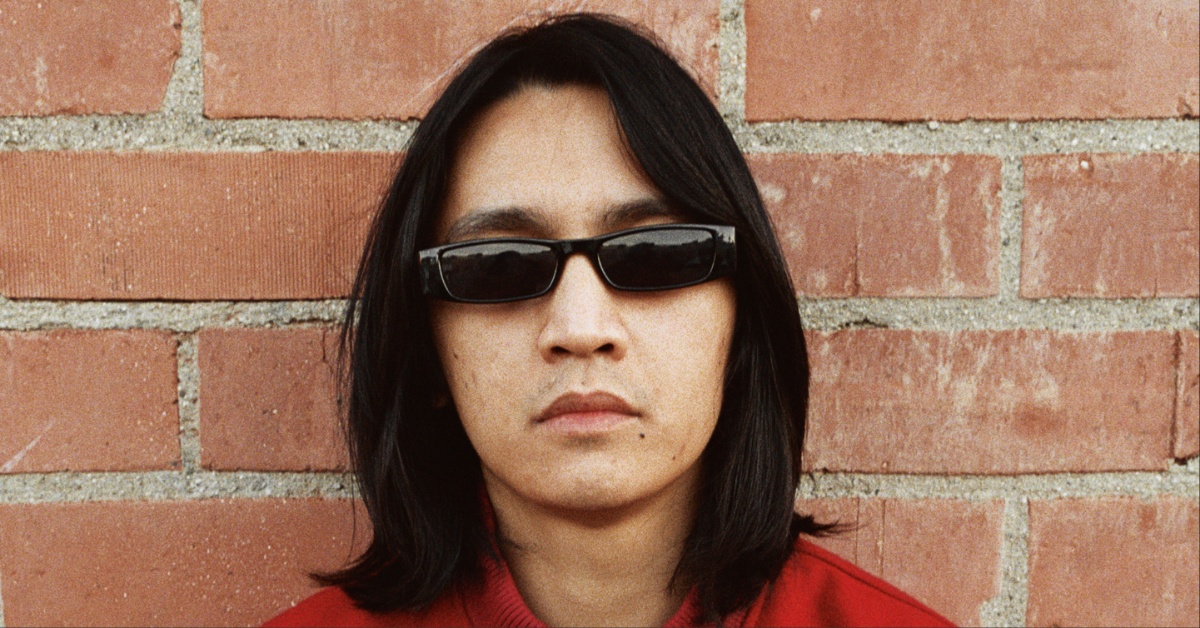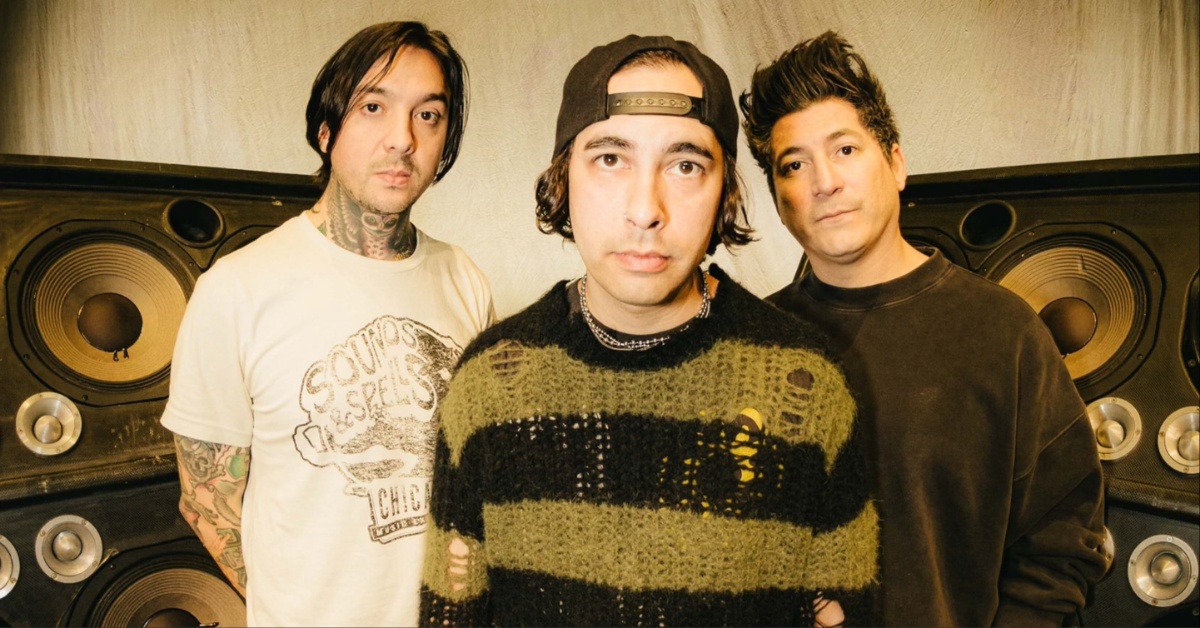
Interview: J. Neto (Greyhaze Records)

…
J. Neto is the current proprietor of Florida’s Greyhaze Records. Like a lot of labels, Greyhaze pull double-duty as archivists of the past and supporters of the present. (Regarding the latter, recent releases include the Warfather LP from ex-Morbid Angel Steve Tucker.) However what sets Greyhaze apart is the attention they pay to the place of J. Neto’s birth: Brazil.
Granted, Brazil has been a metal player since the days of Ratos de Porão, Sarcófago, Sepultura, and on and on. Yet over the past 10 years, Brazil’s metal scene has grown exponentially. Encyclopaedia Metallum lists close to 4,500 Brazilian outfits within its database, nearly 1,000 more than Sweden or the United Kingdom. And it’s a varied bunch. Groups of every strum, scream, and speed call the nation home, making it a tough region for outsiders to tackle since there isn’t a singular Brazilian sound.
That’s where J. Neto comes back in. The guy knows his Brazilian metal. Greyhaze’s repress track record proves it. So, inspired by the imminent World Cup kickoff, I had a chance to ask J. about the history of the Brazilian scene from his point of view and the process of releasing a reissue, along with requesting him to hip us to classics every curious metalhead should investigate.
…
From your perspective how did the Brazilian metal scene come together? Which bands were the progenitors and what is it about Brazilian culture that is so conducive to creating high quality metal?
In my opinion there are two big events that coincided with the spread of metal and heavy music in Brazil in the early ’80s. The first one was the Kiss Brazilian tour for the album Creatures of the Night (1983). It drew hundreds of thousands of people and was covered on national prime time news throughout the entire time Kiss was in Brazil. The second event would be the first Rock in Rio festival (1985), featuring many international rock bands which hadn’t played in Brazil before. Notable bands were Iron Maiden (Powerslave), Scorpions (Love at First Sting), Whitesnake (Slide it In), AC/DC (Flick of the Switch), Ozzy Osbourne (Bark at the Moon), and Queen (The Works). After those two events, metal scenes started to develop more widely in many cities such as Sao Paulo and Belo Horizonte.
Which bands were the progenitors of metal is really up to debate, but speaking from the Belo Horizonte scene, which was to become a very strong metal scene in the country, Overdose and Sagrado Inferno were among the first ones, as far as I can tell. Sepultura came very soon after, along with Sarcófago, Holocausto, Mutilator, and Chakal. I would say all of those would constitute as being part of the beginning of metal in the Belo Horizonte scene. However there are bands from other Brazilian scenes that are older than these bands. In the Sao Paulo area we could mention Vulcano, Korzus, and Viper, which are very important bands. In Rio de Janeiro you have Dorsal Atlantica as pioneers. Of course, there are many others but these are the ones that keep coming to my mind. They were and are mighty and very worthy of deep recognition for their strong and commanding influence in early Brazilian metal.
As far as the personality and aesthetics of Brazilian metal, as many will attest, its appeal comes from the rawness and savagery of it all. In the early ’80s Brazil was just coming out of military rule and was a very closed, conservative, and protectionist economy. When it came to technology and electronics, for example, one could only buy Brazilian-made gear, so there was no outside competition meaning equipment could sometimes be precarious. That, along with the sheer savagery of the bands, created a unique and very captivating sound.
…
…
How does metal function within Brazilian society? Is it respected? Is it just seen as an outlet for kids that people move on from?
Metal and punk are certainly strong in Brazil. There are many great bands in a lot of diverse styles. There are metal and punk scenes in a lot of cities, and there is a new contingent of younger fans and bands that, I believe, are keeping things alive and well. In the hardcore/punk/grind area, the city of Sao Paulo has always been strong. The Belo Horizonte scene is most known for the extreme metal it has generated.
Metal in general has a much wider acceptance in Brazil today than back in the ’80s. Again, looking at the Belo Horizonte landscape, the metal cultural movement is actually part of the city’s personality. Of course, Belo is not ruled by metalheads, but metal is definitely a component in the city’s cultural fabric. Maybe some bands in Brazil might not share my opinion, but looking from the outside, I see the Brazilian and South American scenes are very healthy nowadays.
And regarding the question of people moving away from metal, I don’t think it really happens. I mean, a lot of the guys that were in the early Brazilian bands have moved on into good jobs and whatnot, but they’re all still very active in consuming metal and being involved in it. Some of the old bands are still active to this day, which is the case with bands like Chakal, Impurity, Mystifier, etc.
How did you get into metal? What have been your most important events along the way?
Well, I was only a kid when those Kiss and Rock In Rio shows I mentioned took place. But they did have an effect on me and, around 1987, I bought my first heavy metal album, which was Iron Maiden’s Somewhere in Time. It was one of those amazing discovery moments and I just couldn’t stop listening to that album. Then I went over to Kiss and Ozzy, and pretty soon I started learning about the heavier metal bands of Belo Horizonte.
The first time I went to the Cogumelo shop it was actually quite a moment for me. There must have been 60 people in that tiny store. The music from the store stereo was super loud. People would just spend the whole day there, listening and talking about metal. The Cogumelo shop sometimes felt more like a metal club than a store. Anyway, I think Sarcófago’s INRI was the first album I bought there.
As for big moments, I remember going to see Morbid Angel in Belo Horizonte during the Altars of Madness tour. That was an amazing show because the bill was Morbid Angel (Altars of Madness), Sarcófago (Rotting), and Sextrash (Sexual Carnage). All bands were at the top of their game. Truly a classic moment.
…
…
Tell me more about Greyhaze Records: Why did you start the label? What are your future goals? Have you overcome an obstacles to keep the label going?
Greyhaze started in 2010. It was really something that I had always wanted to do. Back in 2000, I interned at Earache in New York. Having come from Brazil and landing there was really amazing to me. One day I was asked to start calling stores in Latin America to sell the Earache stuff. And, of course, the first place I called was Cogumelo in Brazil. Many years later, soon after opening Greyhaze, I called Cogumelo again and the partnership began. We have been at it for the better part of three years now.
As you can imagine, there were many moments where there was deep difficulty. I can’t say we have had a lot of problems, but we have gone through some sour moments already. However, despite being a very young label, I would say Greyhaze is standing on very solid ground today. We’re very careful with each release to give each one the best chance of success. We’ve developed a good distribution network here in the US as well as in the UK. We also have a good relationship with the bands we work with.
Our outlook for the years ahead involves the continuation of South American releases as well as more diversification of our roster. Even though we work for the most part with South American bands we’re always interested in bands outside of South America. We have Warfather, which has been doing quite well. I also really like the music environment here in Florida. There are great artists here that are very much in tune with the stuff we release, so I think there are good opportunities out there.
I’m interested in the process of reissuing albums because I don’t think people realize the amount of work required to pull everything together. If you could, please detail how a reissue takes place from start to finish.
There are many ways to reissue an album but our approach involves basically three principles: fidelity of audio elements, fidelity of visual elements, and fidelity of an album’s legacy. Each album is a different story but as an example, I can talk about how we reissued the compilation album Warfare Noise. For those who don’t know, Warfare Noise is a compilation featuring the bands Sarcófago, Holocausto, Mutilator, and Chakal. It was a very rare album, and we brought it back because it is a great entry point into Brazilian metal as well as one of the most savage albums I’ve listened to.
Warfare Noise had many problems because there were few source materials to work from. So we decided to rebuild it. On the visual side, we took the original painting done by the artist Ibsen Otoni and re-photographed it using a pro scanner at a special graphics facility. For the insert, all that existed was a photo of the original, which was not in the greatest of shapes. So we worked with the graphic artist Fernando Lima to essentially rebuild it to look exactly like the original. We also found a really cool and old poster from a launch party for the album that we threw in.
On the audio side, we worked with the engineer Dave Eck to clean each track of pops, dirt, and other impurities. We then remastered the album to bring out all elements on the audio. So the record sounds the very same as the original.
Then for final packaging of the vinyl, we included a limited orange vinyl, matching the color scheme of the cover. So the result fulfilled all basic principles: audio, visual, and legacy.
…
…
Finally, what five Greyhaze albums best sum up the label? And, for a sixth, if there were any album you could reissue, what would it be?
1. Sarcófago – INRI – It was really exciting working on this release and we’re honored to be involved with such a classic album.
2. Sextrash – Sexual Carnage – This one hasn’t yet come out, but it will most likely be our best looking and sounding project. Plus, this is one of wildest and most insane albums to ever come out of South America, in my opinion.
3. Warfather – Orchestrating the Apocalypse – We’ve been working with Steve Tucker for a few years already and Warfather keeps doing very well. It is developing into a monster. I’m looking forward to the next album.
4. Chakal, Holocausto, Sarcófago, Mutilator – Warfare Noise. This is the entry point into Brazilian metal and, as mentioned above, it was fun bringing this album back to light.
5. Mystifier – WICCA – It was great working on this album because it is such a hallmark of extreme metal, and after all these years, Mystifier hasn’t strayed an inch from their original black metal purpose.
As for a release that I would love to work on, I am a huge Celtic Frost fan, so working on any of the early Frost releases: Morbid Tales, To Mega Therion, and Emperor’s Return would be really cool.
…











